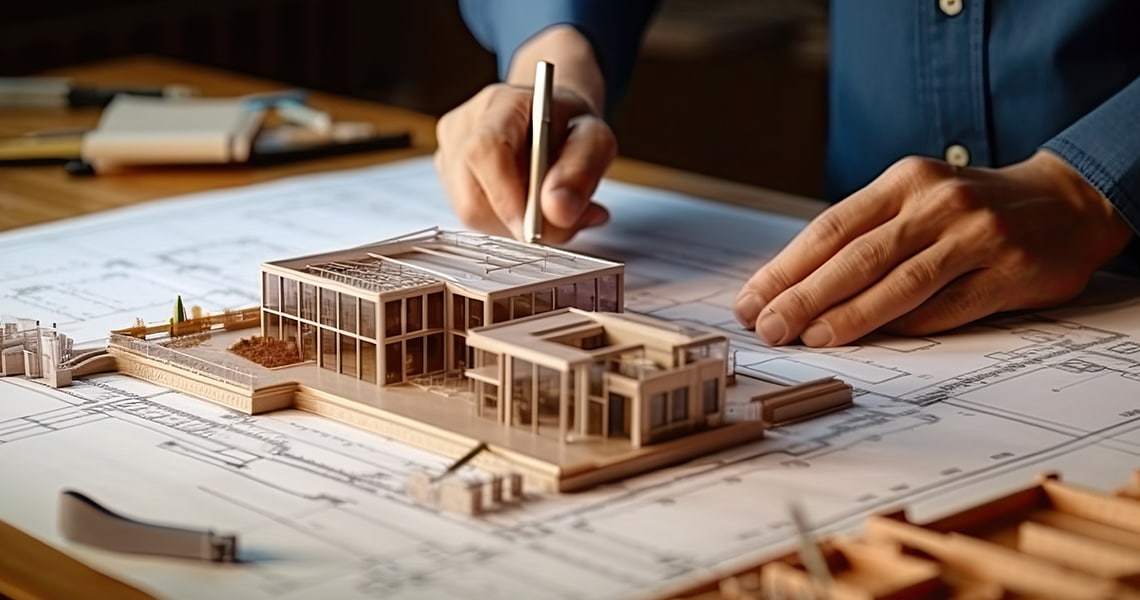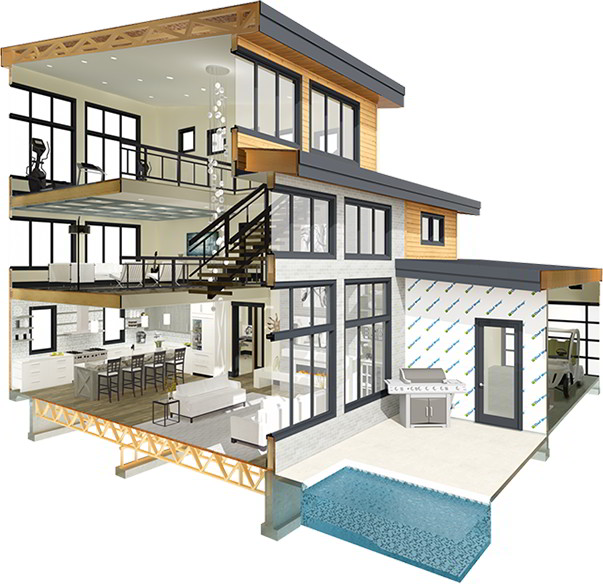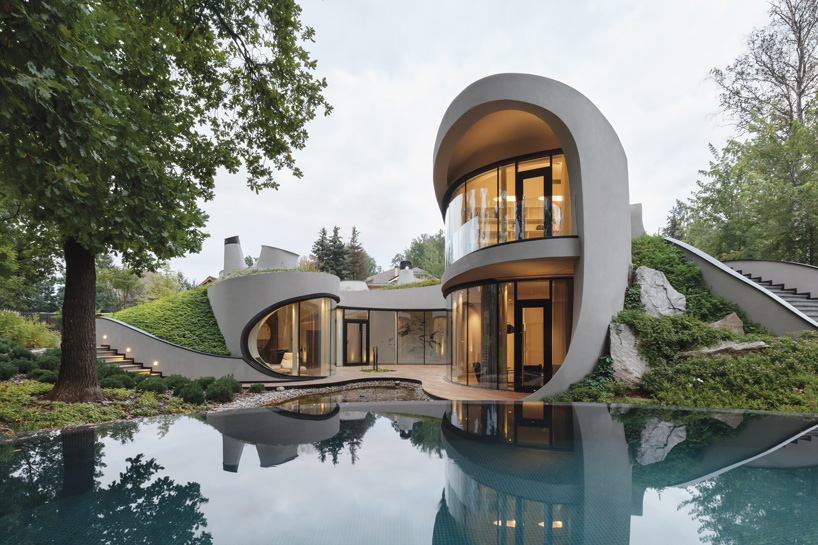Discover Innovative Designs with Leading CDA Architects for Your Following Task
Discover Innovative Designs with Leading CDA Architects for Your Following Task
Blog Article
The Effect of Technical Advancements on the Design Practices of Contemporary Architects
The rapid development of technological devices has dramatically improved the layout landscape for modern designers, promoting unprecedented levels of technology and sustainability. The integration of Structure Info Modeling (BIM), parametric design, and fabricated knowledge has not only structured partnership amongst diverse groups but likewise redefined task execution. As architects welcome these improvements, they are confronted with complicated obstacles that might impact their innovative processes. Discovering these dynamics exposes a nuanced interplay in between innovation and typical design methods, motivating a closer exam of what the future holds for building methods.
Advancement of Architectural Tools
Exactly how have building devices transformed the layout and building procedures over the centuries? The evolution of building devices has actually dramatically affected the efficiency, precision, and creative thinking of design and building.
With the advent of the Renaissance, the introduction of the compass and the protractor marked a pivotal shift. These devices enabled designers to achieve higher accuracy in their designs, promoting the emergence of more detailed and proportional structures. The Industrial Transformation further reinvented architectural exercise with the intro of mechanized tools and materials, allowing for bigger and more ambitious tasks.
In the 20th century, the development of computer-aided design (CAD) software program changed the landscape once more, giving architects with unprecedented capabilities in modeling and visualization. Today, progressed devices such as Building Information Modeling (BIM) and parametric design software proceed to push the limits of architectural technology, allowing an extra integrated strategy to layout and construction procedures.
Improved Cooperation in Style
As technology remains to evolve, boosted partnership in layout has become a cornerstone of modern building technique. The integration of digital devices such as Building Info Modeling (BIM), cloud-based systems, and progressed visualization software has transformed the method engineers, designers, and stakeholders connect throughout the layout process. These tools facilitate real-time communication, allowing teams to share ideas, modifications, and feedback immediately, no matter of geographical location.

Additionally, interdisciplinary cooperation has actually been structured with these technical developments, making it possible for engineers to work more very closely with other professionals, such as metropolitan organizers and ecological professionals. The outcome is a more cohesive approach to develop that considers different perspectives and experience. Ultimately, enhanced collaboration in style is not simply a trend; it is necessary for developing cutting-edge, practical, and cosmetically pleasing architecture in a significantly complicated globe.

Sustainability Via Innovation
Sustainability in design has actually progressively come to be linked with technical innovation, driving the industry toward environmentally accountable techniques. Contemporary engineers are leveraging advanced technologies to reduce ecological effect while boosting the efficiency of structures. cda architects. One popular example is making use of Structure Information Modeling (BIM), which enables specific preparation and resource allotment, decreasing waste throughout building and construction and advertising power performance throughout a structure's lifecycle
In addition, clever materials and energy-efficient systems are being incorporated right into layouts to maximize resource use. Technologies such as solar cells and eco-friendly roof covering systems harness renewable resource resources, adding to reduced carbon impacts. In addition, the application of expert system in design processes enables designers to simulate and examine power consumption, guiding choices towards even more sustainable end results.
The assimilation of lasting modern technologies not only aligns with worldwide ecological objectives however also meets an enhancing demand from consumers for read this green solutions. As architects embrace these advancements, the emphasis moves in the direction of creating rooms that are not only visually pleasing however additionally functionally lasting, therefore redefining the criteria of modern-day design. In this way, technology serves as a catalyst for sustainability, enabling engineers to design structures that respect and boost the native environment.
Obstacles in Implementation
While technological improvements in style hold terrific promise for improving sustainability, their application frequently comes across substantial challenges. One main obstacle is the high knowing contour linked with brand-new innovations. Engineers and building experts might call for comprehensive training to successfully utilize advanced software program and tools, which can postpone project timelines and boost expenses.
Additionally, the integration of arising innovations, such as Building Information Modeling (BIM) and lasting products, usually requires collaboration across multidisciplinary groups. This collaboration can be prevented by distinctions in competence, process, and interaction designs, causing potential conflicts and ineffectiveness.

Additionally, governing frameworks and building ordinance may not equal technological innovations, developing obscurity and possible conformity concerns. This obstacle can prevent architects from totally embracing new modern technologies, as the threat of non-compliance might surpass the advantages. Resolving these implementation obstacles is important find here for the effective assimilation of technical advancements in modern architectural methods.
Future Patterns in Design
The obstacles connected with the execution of new modern technologies in style have motivated a reevaluation of future fads within the industry - cda architects. As designers browse issues such as sustainability, urbanization, and social equity, they are progressively embracing innovative technologies to boost design efficiency and ecological performance
One popular fad is the integration of fabricated knowledge (AI) in the style procedure. AI tools can examine vast datasets to inform design choices, boosting both creativity and capability. In A Similar Way, Building Details Modeling (BIM) continues to progress, see here now making it possible for real-time cooperation among stakeholders and helping with streamlined job monitoring.
Sustainable layout practices are also obtaining momentum, with engineers concentrating on flexible reuse and regenerative style concepts that minimize source usage and waste. The incorporation of wise products and renewable resource resources will certainly better enhance the strength of buildings when faced with climate modification.
Furthermore, the increase of parametric design allows for even more customized and context-sensitive building solutions (cda architects). By utilizing these developments, designers are poised to develop developed atmospheres that not just attend to the immediate needs of society however also expect future difficulties, therefore redefining the duty of architecture in an ever-changing globe
Verdict
Technical advancements have actually substantially improved building style practices, assisting in improved precision, partnership, and sustainability. The combination of tools such as Building Info Modeling and parametric style software program, together with fabricated intelligence and smart materials, equips engineers to resolve intricate challenges better. While application might provide specific obstacles, the continued development of these innovations guarantees to drive innovation in design. Future patterns will likely better emphasize sustainability and effectiveness, inevitably redefining the built atmosphere.
Report this page